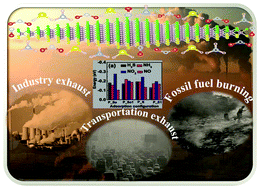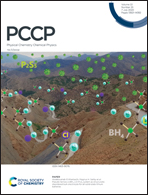Ultrahigh sensitivity with excellent recovery time for NH3 and NO2 in pristine and defect mediated Janus WSSe monolayers†
Abstract
We demonstrated ultrahigh sensitivity with excellent recovery time for H2S, NH3, NO2, and NO molecules on the sulfur and selenium surfaces of Janus WSSe monolayers using density functional theory. The selenium surface of the WSSe monolayer showed strong adsorption in comparison to the sulfur surface. The respective adsorption energies for H2S, NH3, NO2 and NO molecules are −0.193 eV, −0.220 eV, −0.276 eV, and −0.189 eV. These values are higher than the experimentally reported values for ultrahigh sensitivity gas sensors based on MoS2, MoSe2, WS2, and WSe2 monolayers. The computed adsorption energy and recovery time suggest that the desorption of gas molecules can be achieved easily in the WSSe monolayer. Further, the probable vacancy defects SV, SeV, and (S/Se)V and antisite defects SSe, and SeS are considered to understand their impact on the adsorption properties with respect to the pristine WSSe monolayer. We observed that the defect-including WSSe monolayers showed enhanced adsorption energy with fast recovery, which makes the Janus WSSe monolayer an excellent material for nanoscale gas sensors with ultrahigh sensitivity and excellent recovery time.

- This article is part of the themed collection: 2020 PCCP HOT Articles


 Please wait while we load your content...
Please wait while we load your content...